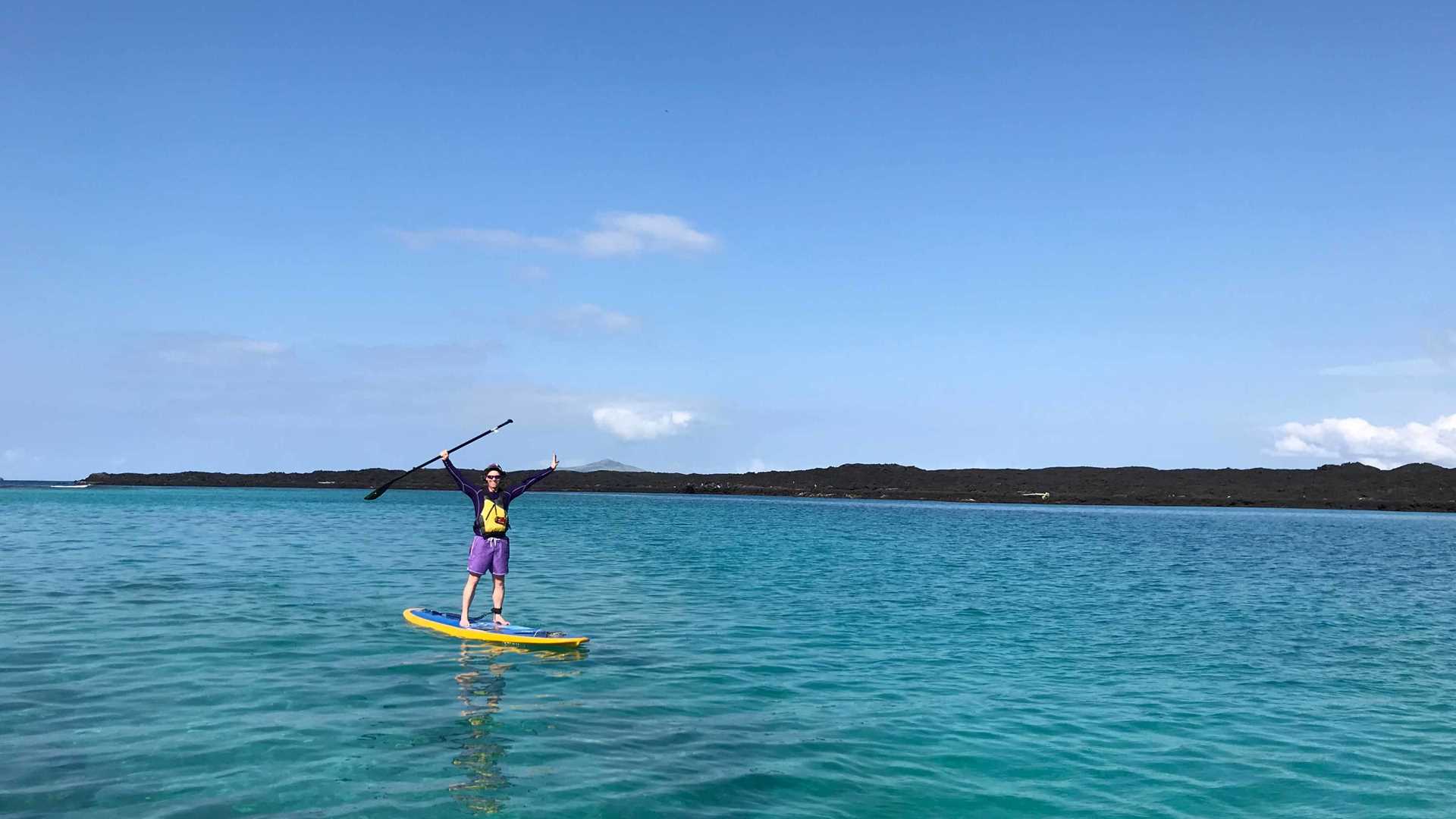Today we woke up to the view of extensive lava flows surrounded by crystal clear waters and sandy bottoms. The morning expedition took place above and under water, in the breathtaking channel between Sombrero Chino Islet and Santiago Island. We kayaked, paddle boarded, went zodiac driving and lastly snorkeled with penguins, sharks, rays, sea lions and many fish. In the afternoon, we went looking for more penguins from the zodiacs and then hiking on one of the many lava flows of Santiago Island, the Sullivan Bay flow. This is the youngest lava flow on this island and dates back to the 1897, even though this flow is 120 years old there are only some pioneer plants such as lava cactus and mollugos. It will take many more years for the soil to be ready and other plants to establish and for wildlife to follow. The beauty of this flow reminds us how amazing nature is, being able to go from bare lava rock to beautiful green incense tree forests, just like it happens in the Galapagos Islands. We went back onboard having spent another stunning day in paradise with a spectacular sunset lighting our way back to the ship!
- Daily Expedition Reports
- 16 Mar 2018
Sombrero Chino & Sullivan Bay, Santiago Island, 3/16/2018, National Geographic Islander
- Aboard the National Geographic Islander
- Galápagos
Gianna Haro, Naturalist
Most of Gianna´s memories seem to be dreams, made on flawless white sandy beaches with black lava rock contours and gorgeous turquoise ocean waters. Most of it happened while barefoot, in an enchanting place that some people regard as an ideal natura...
Read MoreShare Report
Related Reports
11/23/2022
Read
National Geographic Islander II
Isabela and Fernandina
Our day began with the chance to point out a lot of interesting geological features as we enjoyed Zodiac tours along a massive flank of Ecuador Volcano on Punta Vicente Roca. In the afternoon, we took a sunny walk on Punta Espinoza on Fernandina Island. We spotted many iguanas, and a bunch of sea lions hanging around, too.
11/22/2022
Read
National Geographic Islander II
North Seymour & Rabida Islands
Relatively small and low compared to neighboring Santa Cruz, North Seymour is located to the north of Baltra. The island is dry with predominantly low shrubs, like prickly pear cacti. The incense trees are bare during the dry season. Seabirds like frigatebirds and blue-footed boobies nest on the island, and sea lions rest on the sand when they are not fishing. Land and marine iguanas also live here. Rabida is in the middle of the archipelago and has a striking red sand beach. We observed a small colony of sea lions of all ages resting or nursing. Behind the beach, American flamingos nest in a brackish lagoon. This island is full of contrasts and wildlife that we enjoyed observing during this day of expedition.







